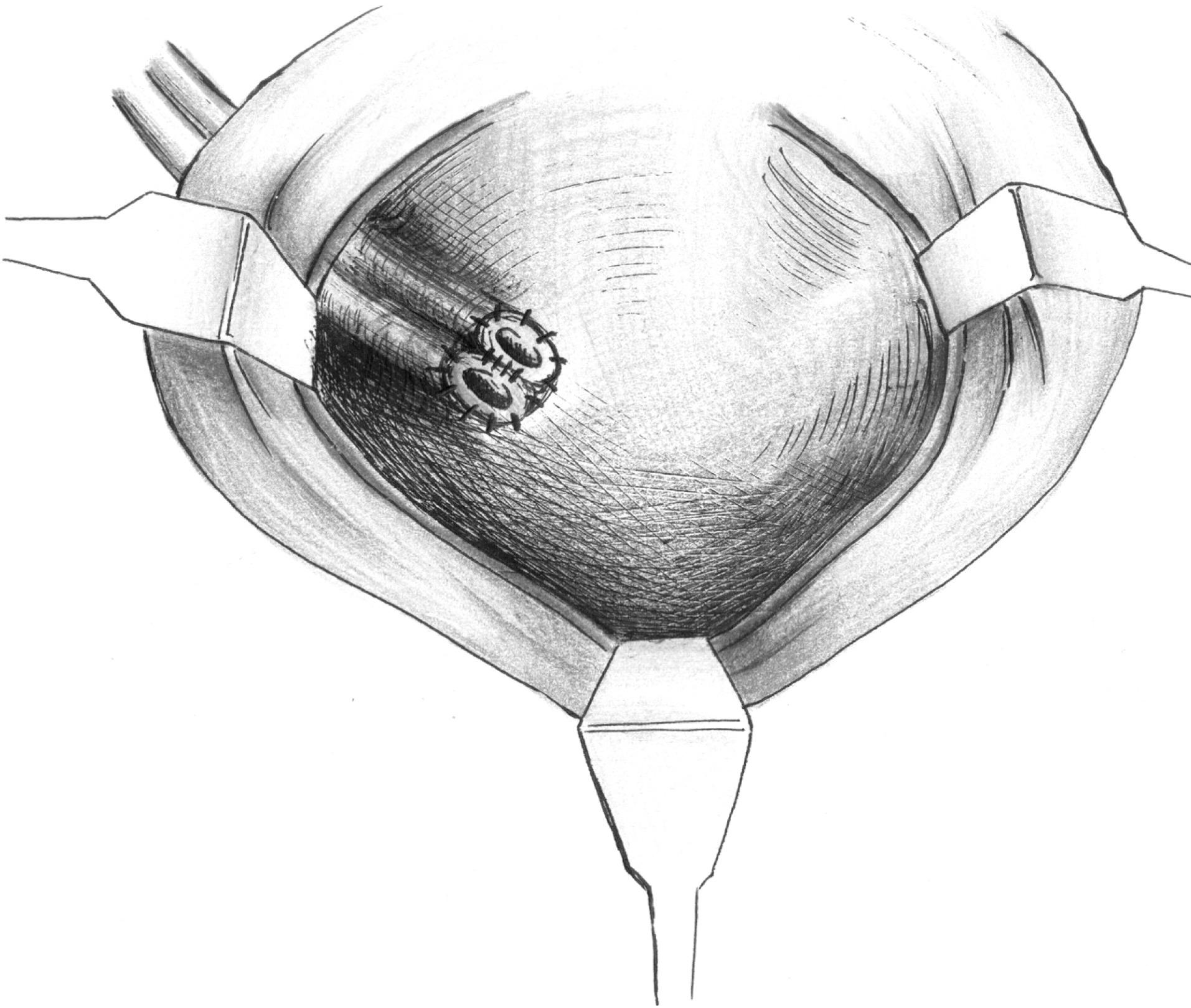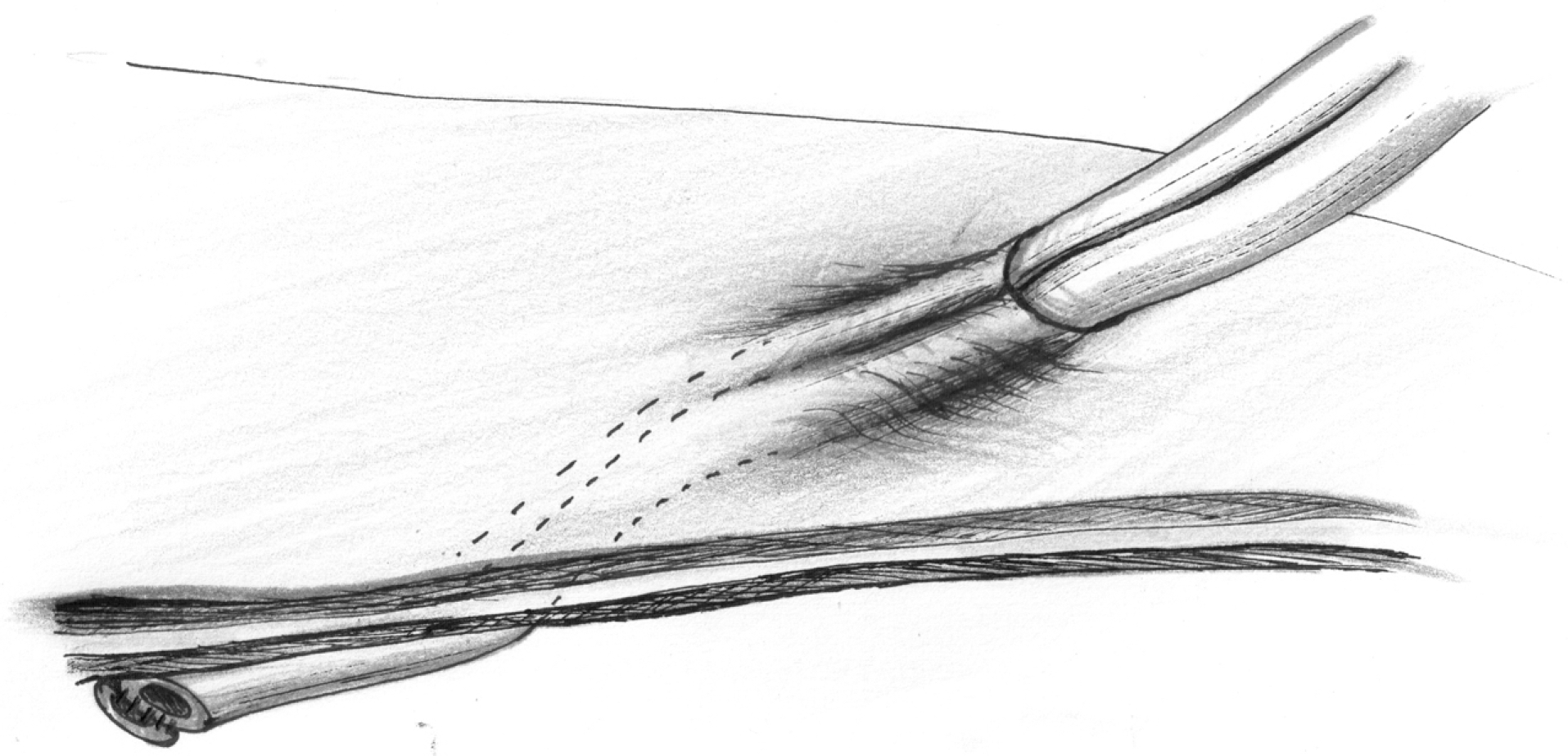Abstract
Duplicated ureters are the most common congenital malformation of the upper urinary tract, but there are few reports on the transplantation of kidneys with duplicated ureters. We introduce different techniques for the ureteroneocystostomy of double ureters and long-term results. We specifically detail the experience of two patients with duplicated ureters at Bong Seng Memorial Hospital from March 1995 to May 2012. In our first case, the top technique of spatulating and suturing duplicated ureters was applied with the bottom technique for double ureteroneocystostomy. The operation time was 4 hours and 45 minutes, while the ureteroneocystostomy took 32 minutes. In the second case a double-armed 4.0 Vicryl suture was placed on each tip of the ureter and both needles passed from the inside out through the bladder wall. The ureters were pulled into the bladder and the suture was tied on the serosa of the bladder. The operation time was 3 hours and 50 minutes, while the ureteroneocystostomy took 15 minutes. Neither urological complications nor urinary tract infections were observed in the follow-up period and no double-J stent was needed. We therefore conclude that these two techniques are available procedures for handling duplicated ureters, with the technique applied in the second case particularly time-effective.
REFERENCES
1). Khoury AE, Bägli DJ. Vesicoureteral reflux. Mc-Dougal WS, Wein AJ, Kavoussi LR, Novick AC, Partin AW, Peters CA, editors. Campbell-Walsh urology tenth edi-tion review. 10th ed.Philadelphia: Elsevier/Saunders;2012. p. 598–605.

2). Ackermann JR, De Preez M, Rösemann E. The transplantation of a cadaver kidney with ureteral duplication: a case report. J Urol. 1971; 106:494–6.

3). Huilgol AK, Ganesan KS, Sundar S, Chandrashekar V, Prasad S, Raviraj KG. Double ureters in renal transplantation: our technique. Transplant Proc. 1994; 26:2039–40.
4). Sulikowski T, Zietek Z, Ostrowski M, Kamiń ski M, Sień ko J, Romanowski M, et al. Experiences in kidney transplantation with duplicated ureters. Transplant Proc. 2005; 37:2096–9.

5). Nghiem DD. Use of a single stent for double ureter support in transplantation. Transpl Int. 1995; 8:55–7.

7). Nakatani T, Uchida J, Kim T, Yamamoto K, Kishomoto T. Modified extravesical ureterocystoneostomy of the kidney transplant allograft with completely duplicated ureters. Int J Urol. 2000; 7:313–5.

8). Nagashima N, Saitoh N, Arai T, Watanabe T, Koyama I. Double ureteroneocystostomy for duplicated allograft ureters in renal transplantation. Transplant Proc. 2003; 35:334–6.





 PDF
PDF ePub
ePub Citation
Citation Print
Print




 XML Download
XML Download